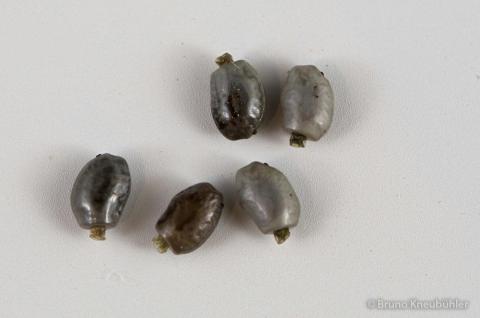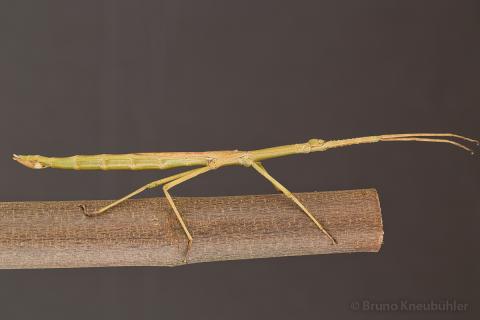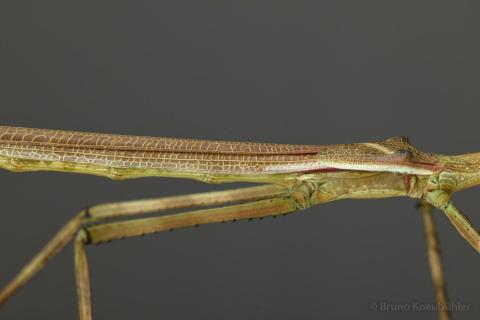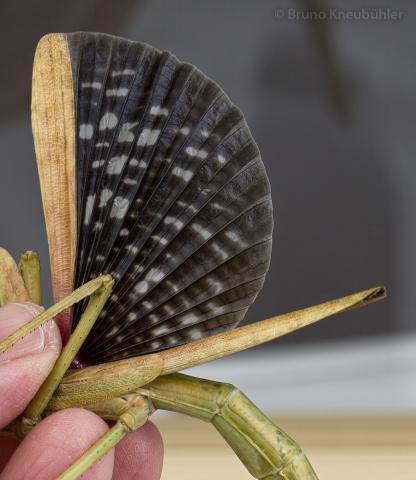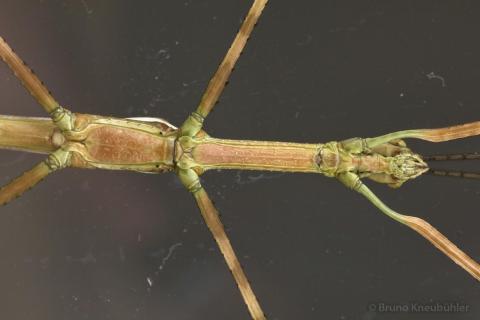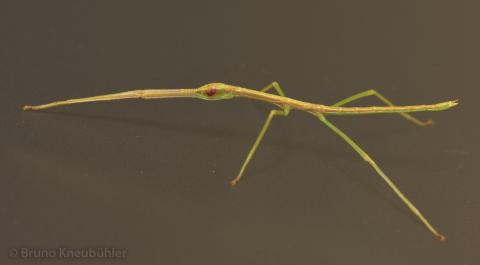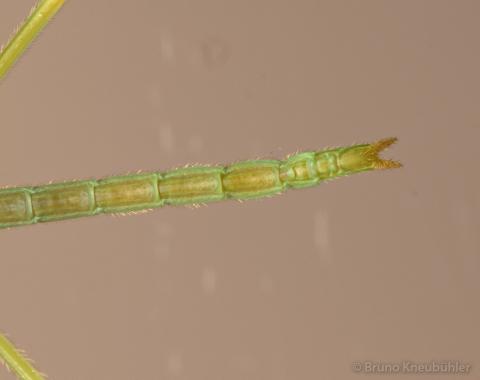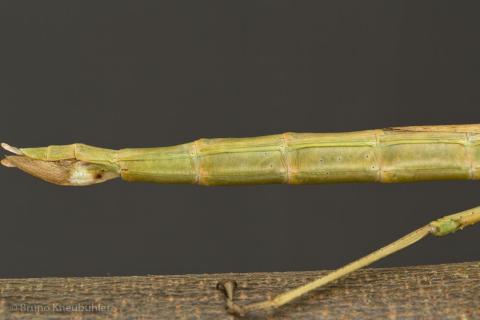
Genus
Stock
CLP
561
Culture status
Unknown
Foodplants
Bramble (Rubus spp.)
Breeding notes
General Notes
- described by Hennemann, Conle, Suzuki (2015) as Anchiale buruense
- Etymology – in the greek mythology Anchiale (or Anhkiale) is the Titan goddess of the warmth of fire, and the wife of Hekateros
- the genus Anchiale has been introduced by Stål (1875) with the type species Anchiale maculata (which has been described by Olivier in 1792 as Mantis maculata)
- the genus Ctenomorphodes is a synonym for Anchiale
- until 2012 5 different Anchiale species are or have been in culture – see PSG list on Phasmatodea.com
- Anchiale sp. "Buru" is most probably a new species (Frank Hennemann, per. comm. 2012)
_________________
Culture History
- 2012 - first successful culture by Bruno Kneubuehler
- 2012 - this species has been distributed as Anchiale sp. „Buru“
- 2015 - this culture should now be called Anchiale buruense "Buru"
_________________
Origin
- Buru (Maluku Islands, Indonesia)
_________________
Females
- big, rather stout phasmids
- about 15.5 – 16.5 cm long
- coloration amongst females seems to be consistent, judged by only available two adult females
- main coloration geenish-brown
- several spines on the legs, especially the forelegs
- small humps on the mesothorax (dorsally)
- subgenital plate is well developed and reaches beyond the abdominal ending
- antennae shorter than forelegs
- long, broad cerci
- wings are well develped, hind wings are about half as long as the abdomen
- (closed) wings are reddish-brown
- membranous part of hindwings (alae) is mottled grey-black
_________________
Males
- medium sized, thin phasmids
- about 9.5 – 10.5 cm lang
- coloration is rather consistent amongst males (F1)
- main color greenish-brown
- dark areas on the head and legs
- (closed) wings reddish-brown
- head with interesting markings – makes them look like miniature Beagle Boys
- 4 ocelli (simple eyes) are well developed and visible
- antennae shorter than forelegs
- small spines on the legs
- several small humps, mainly on the mesothorax (dorsally)
- long cerci
- wings are very well developed
- membranous part of hindwings (alae) is mottled transparent-black
_________________
Nymphs
- about 13 mm (L1)
- dorsally reddish-brown, ventrally greenish (L1)
- very short antennae
- red eyes (L1)
- already in L3 it is quite easy to draw a distinction between ♀♂ (by the naked eye)
_________________
Eggs
- about 3.5 x 2 mm
- variable color – many are grey, others are grey-black or gray-brown
- glossy
- irregular, elongate
- distinct, greenish capitulum is present on the operculum (egg lid)
- micropylar plate is thin and long
_________________
Food Plants
- bramble (Rubus sp.)
is very well accepted by freshly hatched nymphs, older nymphs and adults - no other food plants have been tested by me (so far)
_________________
Behaviour
- nymphs and adults can react rather frantically when they feel threatened (like when being touched)
- Especially the adult males drop down, wriggle about, try to fly away and freeze again after a few steps or a short flight
- otherwise both nymphs and adults are passive during the day and feed during the night
- a defensive spray has not been observed
- males try to escape flying
- females can not fly
- females fling the eggs away with a swing of their abdomen
- mating coccur often during the night, males can stay with one female for up to some days
_________________
Developement
- approximate incubation time (HH-incubation on slightly damp sand at 20 - 23 °C) is about 4 – 5 months (F1). The exact incubation could not be determined, as the exact date when the eggs have been laid was unknown
- spread some dried (!) moss over the eggs - this will make it much easier for the nymphs to hatch unscathed and it also reduces mould growth to some extend
- hatching ratio in F1 was high (about 40%)
- males will be adult after about 3 months (at 20 – 23°C), females after about 4 months
- females start laying eggs after about 3 weeks
- about 30 – 35 eggs per female and week
- adults can live for several months
_________________
Breeding Notes
- my general notes on how to breed phasmids are a substantial part of this care sheet ...
- it is easy to breed this species
- as the freshly hatched nymphs are already quite big, therefore the incubation container must be big enough
- keep the nymphs in a cage with good ventilation, but take care that the humidity does not drop too low
- a constantly wet paper towel on the floor of the cage helps raising humidity
- a humidity level of about 60+ % rH (for adults) and 75+ % rH (for nymphs) seems to be fine
- nymphs can be kept in a Faunabox (or similar cages like Faunarium)
- move nymphs to a bigger cage as they grow bigger
- a cage of at least 50 x 30 x 30 cm should be provided for 3 – 4 adult couples of this species (or considerably larger if the cage also contains other species !)
- generally I advise to keep different phasmid species seperately (overcrowed cages are still too common ...)
- I have never sprayed nymphs, adults or their cage with water
- make shure that nymphs, which are about to undergo their adult moult, do not find places in the cage which would not offer them enough space beneath to moult successfully
_________________
References
- Phasmida Species Files (www.phasmida.orthoptera.org)
